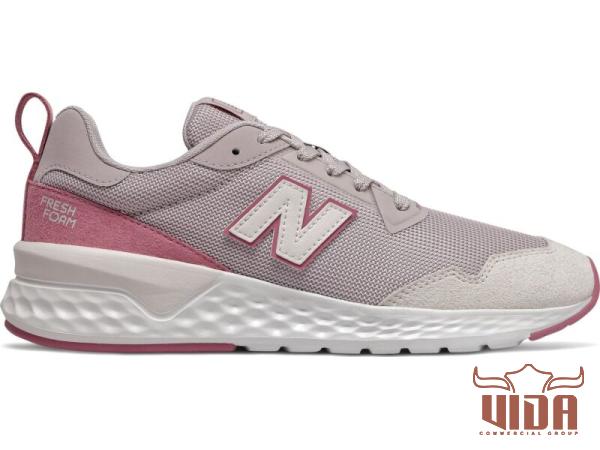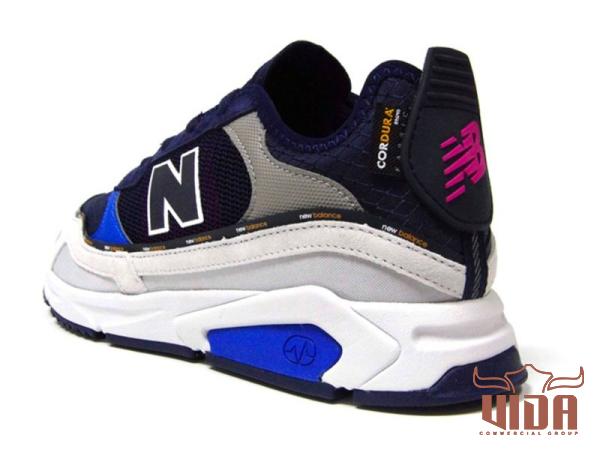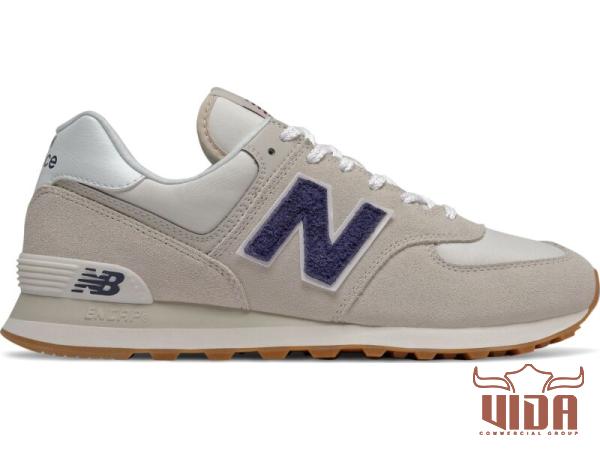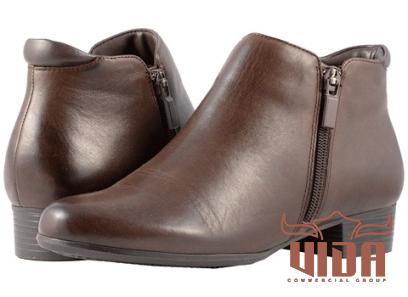In recent years, New Balance has emerged as a significant player in the global sneaker market. With a rich heritage and a commitment to producing high-quality footwear, the brand has garnered a loyal following of sneaker enthusiasts. This article aims to explore the success of New Balance’s sneaker sales, focusing on key factors that have contributed to their popularity. We will delve into the brand’s unique selling points, their marketing strategies, and the evolving consumer trends that have aided their growth. 1. Heritage and Innovation: New Balance’s success can be attributed, in part, to its rich heritage and commitment to innovation. Established in 1906, the company has stood the test of time by consistently delivering quality sneakers to its customers. The brand’s core values of craftsmanship and attention to detail have resonated with consumers who prioritize comfort and durability. New Balance has also continuously introduced innovative technologies like ENCAP and Fresh Foam to enhance the performance and comfort of their sneakers, setting them apart from competitors. 2. Diverse Product Range: New Balance’s extensive and diverse product range is another key element of their success. The brand offers sneakers for a wide range of purposes, catering to athletes, fashion-conscious individuals, and those seeking comfortable everyday footwear.
leather
 By embracing versatility, New Balance has successfully captured different market segments and expanded its consumer base. 3. Marketing Strategies: New Balance’s marketing strategies have played a crucial role in boosting sneaker sales. The brand has effectively leveraged partnerships with athletes and celebrities to increase their visibility and appeal. Collaborations with influential figures, such as Kawhi Leonard, Jaden Smith, and Joe Freshgoods, have not only attracted new customers but also enhanced the brand’s credibility and relevance in popular culture. New Balance’s strong presence on social media platforms, where they engage with their audience, create captivating content, and respond to customer inquiries, has also been instrumental in driving sneaker sales. 4. Emphasis on Sustainability: New Balance has recognized the growing importance of sustainability in the footwear industry and has made significant efforts to integrate eco-friendly practices into their production processes. The brand has introduced initiatives like the Responsible Leadership strategy, which aims to minimize environmental impact and improve social responsibility. By demonstrating their commitment to sustainability, New Balance has successfully appealed to environmentally conscious consumers who prioritize ethical business practices.
By embracing versatility, New Balance has successfully captured different market segments and expanded its consumer base. 3. Marketing Strategies: New Balance’s marketing strategies have played a crucial role in boosting sneaker sales. The brand has effectively leveraged partnerships with athletes and celebrities to increase their visibility and appeal. Collaborations with influential figures, such as Kawhi Leonard, Jaden Smith, and Joe Freshgoods, have not only attracted new customers but also enhanced the brand’s credibility and relevance in popular culture. New Balance’s strong presence on social media platforms, where they engage with their audience, create captivating content, and respond to customer inquiries, has also been instrumental in driving sneaker sales. 4. Emphasis on Sustainability: New Balance has recognized the growing importance of sustainability in the footwear industry and has made significant efforts to integrate eco-friendly practices into their production processes. The brand has introduced initiatives like the Responsible Leadership strategy, which aims to minimize environmental impact and improve social responsibility. By demonstrating their commitment to sustainability, New Balance has successfully appealed to environmentally conscious consumers who prioritize ethical business practices.
Specifications of leather
 5. Collaborations and Limited Edition Releases: New Balance’s collaborations and limited edition releases have played a pivotal role in their success. By teaming up with renowned designers, sneaker shops, and other brands, New Balance has created highly sought-after, unique sneakers that generate significant buzz and demand. Collaborations with streetwear giants like Concepts, Bodega, and Ronnie Fieg have allowed New Balance to tap into niche markets and attract sneaker enthusiasts looking for exclusive, collectible footwear. 6. Expanding Global Market: While New Balance has a strong presence in the United States, the brand has also made significant strides in expanding its global market. By carefully studying and understanding consumer preferences in different regions, New Balance has been able to localize its marketing strategies and product offerings. This approach, combined with targeted distribution partnerships, has allowed the brand to gain traction in markets like Europe and Asia, contributing to their overall sales growth.
5. Collaborations and Limited Edition Releases: New Balance’s collaborations and limited edition releases have played a pivotal role in their success. By teaming up with renowned designers, sneaker shops, and other brands, New Balance has created highly sought-after, unique sneakers that generate significant buzz and demand. Collaborations with streetwear giants like Concepts, Bodega, and Ronnie Fieg have allowed New Balance to tap into niche markets and attract sneaker enthusiasts looking for exclusive, collectible footwear. 6. Expanding Global Market: While New Balance has a strong presence in the United States, the brand has also made significant strides in expanding its global market. By carefully studying and understanding consumer preferences in different regions, New Balance has been able to localize its marketing strategies and product offerings. This approach, combined with targeted distribution partnerships, has allowed the brand to gain traction in markets like Europe and Asia, contributing to their overall sales growth.
buy leather
 7. Capitalizing on Current Consumer Trends: New Balance’s success can be partially attributed to their ability to capitalize on current consumer trends. In recent years, there has been a shift towards retro-inspired, chunky sneakers, a trend that New Balance has seized upon. With their iconic models like the 990 and 574, New Balance has catered to the demand for nostalgia and vintage aesthetics. By staying ahead of the curve and continually updating their product line to align with emerging sneaker trends, New Balance has remained relevant and appealing to a diverse audience. Conclusion: Through a combination of heritage, innovation, diverse product offerings, strategic marketing, and a keen eye on consumer trends, New Balance has experienced notable success in the sneaker market. The brand’s ability to strike a balance between performance and style, while also prioritizing sustainability, has endeared them to consumers worldwide. As New Balance continues to evolve and adapt, their commitment to quality craftsmanship and attention to consumer needs will likely secure their position as a prominent player in the sneaker industry.
7. Capitalizing on Current Consumer Trends: New Balance’s success can be partially attributed to their ability to capitalize on current consumer trends. In recent years, there has been a shift towards retro-inspired, chunky sneakers, a trend that New Balance has seized upon. With their iconic models like the 990 and 574, New Balance has catered to the demand for nostalgia and vintage aesthetics. By staying ahead of the curve and continually updating their product line to align with emerging sneaker trends, New Balance has remained relevant and appealing to a diverse audience. Conclusion: Through a combination of heritage, innovation, diverse product offerings, strategic marketing, and a keen eye on consumer trends, New Balance has experienced notable success in the sneaker market. The brand’s ability to strike a balance between performance and style, while also prioritizing sustainability, has endeared them to consumers worldwide. As New Balance continues to evolve and adapt, their commitment to quality craftsmanship and attention to consumer needs will likely secure their position as a prominent player in the sneaker industry.










Your comment submitted.